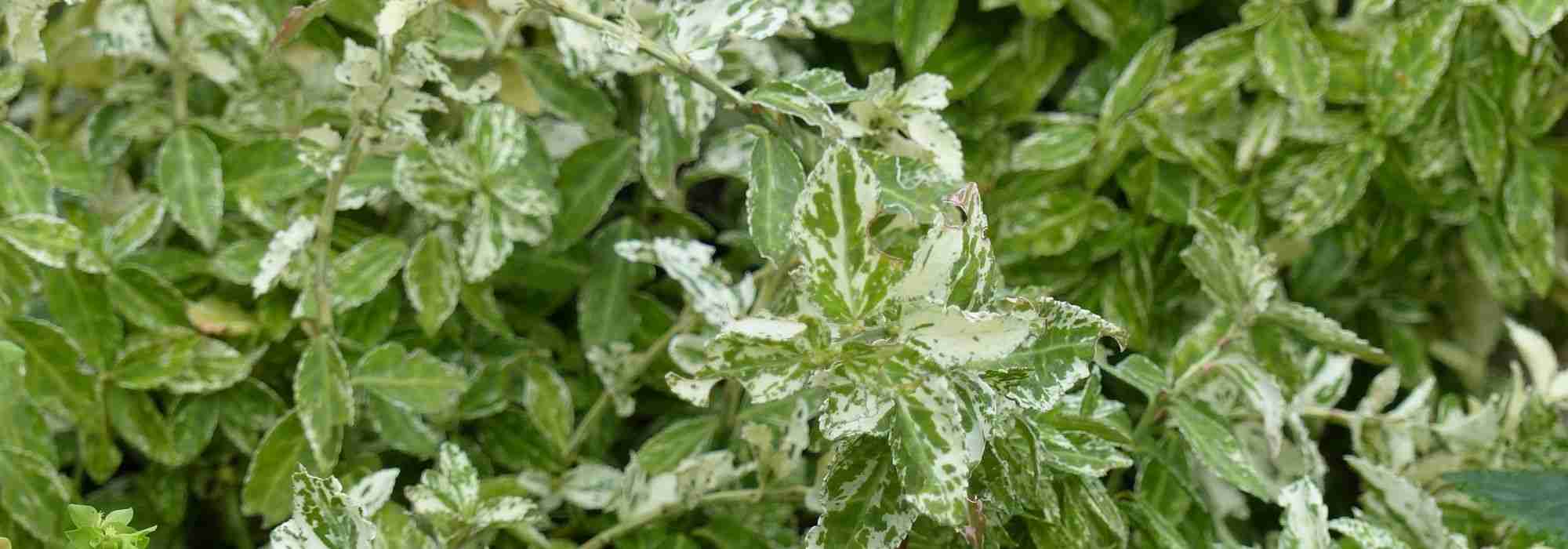
The best groundcover euonymus
Our selection of carpet varieties
Contents
Versatile, spindle trees offer numerous possibilities for use. Those with a creeping habit can be used to edge perennial or shrub beds, cover slopes or walls, or enhance rockeries. The most effective groundcover spindle trees are Fortune’s spindle trees (Euonymus fortunei), named in honour of Robert Fortune, a famous English explorer. Native to China and hardy, this species comes in multiple cultivars, each with its own characteristics: yellow or white variegated spindle trees, pronounced veins, small or long leaves, or stunning autumn colouration.
Despite a rather slow growth rate, these bushes can also be used as climbing plants trained on a support. Easy to grow, it is important to cultivate these groundcover spindle trees in fresh soil, as they are sensitive to drought, in sunny or partially shaded locations. Note that the variegated varieties are more attractive in light shade.
If you are looking for an effective evergreen groundcover, discover our selection of 5 creeping spindle trees without delay!
Euonymus fortunei 'Minimus'
Resistant to temperatures down to -23°C, the Euonymus fortunei ‘Minimus’ is an ideal variety for covering a bank, a rockery, or for dressing the edges of a flowerbed. This groundcover does not exceed 20 cm in height and spreads up to 80 cm in width at ripeness. Its foliage is evergreen and mat-forming, so dense that it prevents adventive weeds from growing. Its small, ovate leaves are dark green and are borne on long, thin stems, giving it a very natural appearance. Its summer flowering is discreet and of little interest. Sarmentous, this cultivar can also climb on a vertical support. The evergreen spindle ‘Minimus’ thrives in full sun or partial shade in any soil, provided it is well-drained and cool in summer.
We recommend pinching young plants to encourage branching. In a flowerbed, pair the spindle ‘Minimus’ with groundcover roses, such as the Sans Contraintes ‘Sweet Knirps’ rose, which has soft pink flowers and reaches about 30 cm in height and 60 cm in width in a few years.
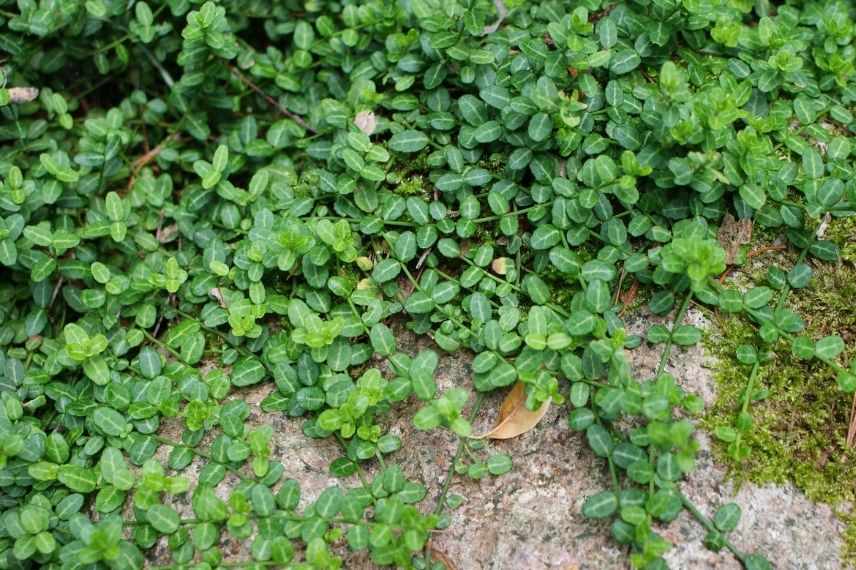
Euonymus fortunei ‘Minimus’ (photo Wikipedia)
Euonymus fortunei 'Wolong Ghost'
Euonymus fortunei ‘Wolong Ghost’ is an unusual creeping spindle tree. Indeed, it features fine, elongated dark green leaves with a prominently marked white-silver central vein. This type of foliage is quite rare among creeping spindle trees. Like the spindle ‘Minimus’, its flowering is insignificant. At about 15 cm high and 60 cm wide, you can plant this evergreen spindle both in the ground and in pots on a terrace or balcony. It is ideal for decorating flowering pots or low walls, from which its foliage can remarkably cascade. Thanks to the climbing roots on its long, flexible branches, this evergreen groundcover can also be used as a small climbing plant trained on a support. It can then reach heights of up to 1.5 m, or even 2 m. This horticultural variety, with exceptional hardiness, prefers semi-shaded locations where the soil remains consistently moist. To thicken its foliage, trim the tips of young stems in early spring.
On a semi-shaded wall, the lovely and modest ruin of Rome (Cymbalaria muralis) and Ajuga reptans ‘Black Scallop’ with chocolate bronze leaves are good companions for the evergreen spindle ‘Wolong Ghost’.

Euonymus fortunei ‘Wolong Ghost’
Discover other Euonymus - Spindle tree
View all →Available in 3 sizes
Available in 3 sizes
Available in 4 sizes
Available in 2 sizes
Available in 2 sizes
Available in 2 sizes
Available in 1 sizes
Available in 2 sizes
Available in 2 sizes
Available in 2 sizes
Euonymus fortunei 'Harlequin'
Very bright, the Euonymus fortunei ‘Harlequin’ is perfect for pot planting, rockeries, or borders. This evergreen bush grows to about 40 cm high and 50 cm wide. Throughout the year, it displays superb crenate foliage, green to grey-green speckled with cream-white. The young shoots in spring are particularly white. After the inconspicuous flowering, slightly pinkish white berries appear in October. While these are not edible for humans, they are for birds. The seeds contained in these fruits are orange. To maintain its intense variegated foliage, grow the groundcover spindle ‘Harlequin’ in partial shade, rather than in full sun. This dwarf spindle tolerates pruning well, and you can shape it by trimming at the end of winter. It is effective for highlighting other shrubs. For example, plant it at the base of the ‘Lemony Lace’ elderberry with its yellow-green foliage and the Cotinus coggygria ‘Lilla’ with its purple-tinged foliage.
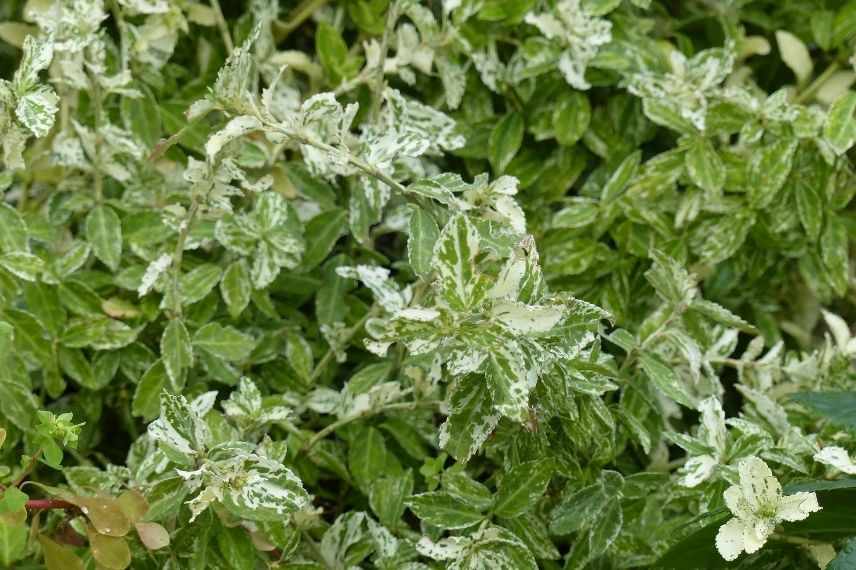
Euonymus fortunei ‘Harlequin’
Read also
Spindle: which variety to choose?Euonymus fortunei 'Sunspot'
The Euonymus fortunei ‘Sunspot’ is a prostrate spindle tree that offers remarkable variegated foliage. It brings a vibrant and permanent touch to partially shaded areas where its colours are enhanced. Its leaves are dark green and elliptical, accentuated by a bright yellow spot in the centre of the lamina. The young, flexible shoots are also tinged with this warm colour. In autumn, the edges of the leaves turn a rosy red with the arrival of the cold, making this bush even more ornamental. Its berries are appreciated by birds. During its early years, the evergreen spindle ‘Sunspot’ develops horizontally, then takes on a more bushy shape with age (40 cm high, 70 cm in diameter). This excellent and highly aesthetic groundcover is perfect for limiting the growth of weeds. Very hardy, the evergreen spindle ‘Sunspot’ is ideal in a winter garden alongside other low plants, such as Ophiopogon planiscapus ‘Nigrescens’ with black foliage and Carex oshimensis ‘Everest’ with white-margined foliage.
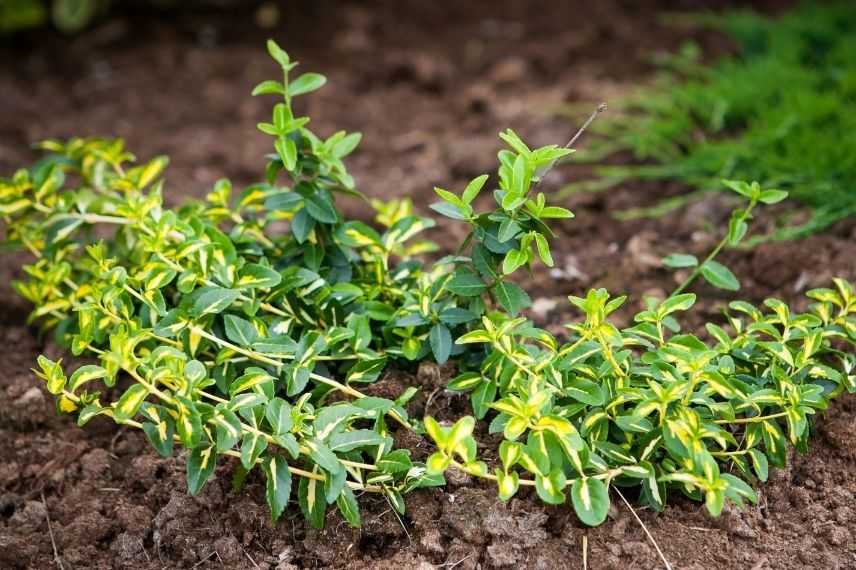
Euonymus fortunei ‘Sunspot’
Euonymus fortunei 'Coloratus'
The Euonymus fortunei ‘Coloratus’ is valued for its beautiful late-season colouring. This creeping spindle tree is adorned with glossy evergreen foliage, coloured dark green turning to reddish purple at the first signs of cold. Compact and dense, this small evergreen bush looks splendid. Its neat elegance is ideal for edging pathways or enhancing shrub beds and banks. You can also plant it in pots or containers to bring vibrant colours to your terrace and balcony in autumn/winter. Its growth reaches about 30 cm in height and at least 60 cm in width. The very discreet flowering produces orange fruits in late summer to early autumn. Although inedible for humans, they have the advantage of being decorative while providing food for garden wildlife. Like the previously mentioned spindles, the ‘Coloratus’ variety can also be used as a climbing plant, for example on a trellis. Not demanding in terms of soil, grow this spindle in a consistently cool location, such as at the edge of a woodland. On a partially shaded bank, pair the groundcover spindle ‘Coloratus’ with the creeping cotoneaster ‘Streibs Findling’, which is covered in numerous coral-red berries.

Euonymus fortunei ‘Coloratus’
- Subscribe!
- Contents
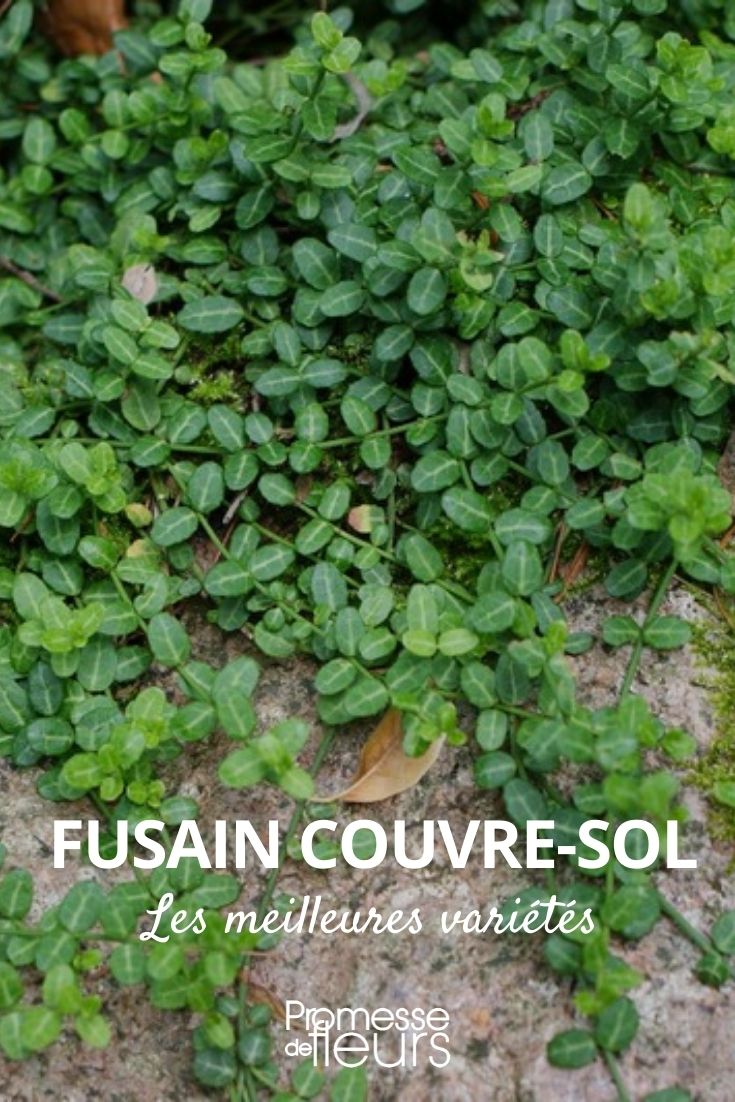
































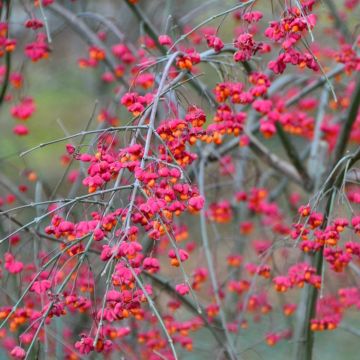



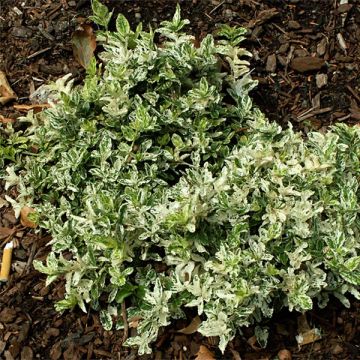
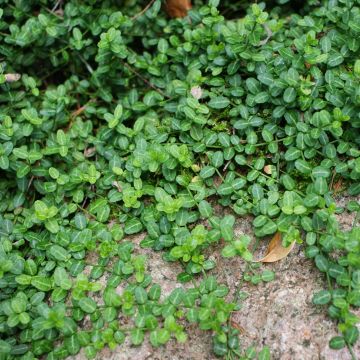



Comments